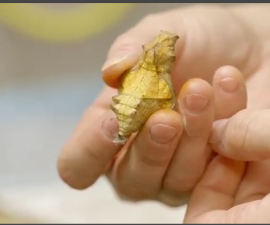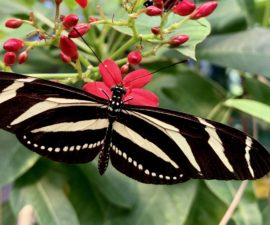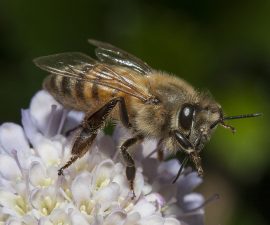ILLUSTRATIONS BY AMY BLANDFORD
The Science Behind Butterfly Migration
Butterfly migration is a fascinating natural phenomenon where some species travel thousands of miles to escape harsh weather conditions or in response to limited resources. These winged wonders fly to areas with abundant food sources, such as nectar-rich flowers, to ensure better nourishment for themselves and their larvae, and to find a suitable place to breed. Here’s a look at a few of those frequent flyers.
Monarch
Danaus plexippus
Monarch butterflies can travel up to 100 miles a day; and some fly as far as 3,000 miles to spend the winter. In North America, the eastern monarch population heads to Mexico’s Sierra Madre mountains. Western monarchs overwinter along the California coast.
Question Mark
Polygonia interrogationis
Question mark butterflies are found from southern Canada, throughout the east, down to Florida and the Gulf of Mexico; and west to Arizona and Colorado. Some of them migrate individually—rather than en masse— from their northern homes to warmer southern US states and are often found along the Gulf Coast, while others overwinter.
Cloudless Sulphur
Phoebis sennae
Each fall, the cloudless sulphur’s migration pattern starts at its breeding sites in the northern United States and heads to Florida and other parts of the southern US. This is home until the end of winter, then it’s back north to the same breeding sites.
Red Admiral
Vanessa atalanta
The red admiral is one of the most common butterfly species in the world. Its range includes North Africa, Asia, Europe, North and Central America, the Caribbean, and the Hawaiian Islands. Red admirals in North America migrate from as far north as Canada to spend the winter in southern Texas.
Common Buckeye
Junonia coenia
Found across the southern US and much of Mexico, the common buckeye annually increases its range northward to temporarily colonize much of the US and, occasionally, southern Canada. In late summer and continuing through fall, masses of adults move southward into peninsular Florida, where the adults overwinter.
Painted Lady
Vanessa cardui
Painted lady butterflies are found all over the world and have many migration routes that are not necessarily dictated by seasonality. During the US migration in spring, they head northwest from their winter homes in Southern California deserts, sometimes in very large numbers (the trip may take several generations to complete).
Discover more about the power of pollinators and the butterfly conservation you make possible.
(Top image photo credit: ©JHVEPhoto/iStock/Getty Images Plus)











